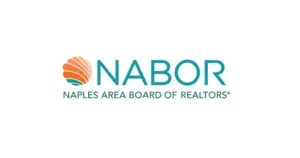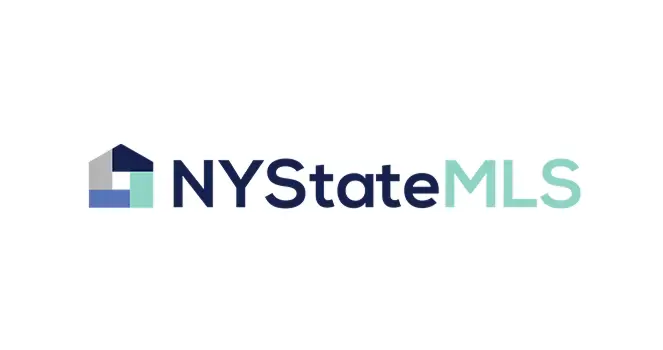If you’ve worked in New York real estate for any time, you know the MLS landscape can feel like a maze. Different boards, different territories, different rules. It’s enough to make you wonder why listing a property across county lines needs to be so complicated.
That’s precisely the problem the New York State MLS set out to solve in 2009. This independent, statewide Multiple Listing Service was born from frustration with the status quo. Local REALTOR boards weren’t willing to work together on a unified system, so founder Dawn Pfaff built one herself. What started as a solution for New York grew into something bigger: a nationwide MLS network covering all 50 states.
Here’s what makes NY State MLS different: no territorial restrictions, no fines for rule violations, and the ability to list properties anywhere you hold a license. Let’s explain how it works and whether it makes sense for your business.
How NY State MLS Got Started
Dawn Pfaff launched NY State MLS in 2009 after hitting a wall with local boards that refused to collaborate. The concept was radical but straightforward at the time. One MLS covers the entire state of New York and is open to any licensed professional.
The service caught on quickly. Within six years, membership grew to over 32,000 agents across New York. That success led to an even bigger move in 2015: expanding nationwide as My State MLS, the first MLS system designed to cover every state and territory.
Today, the operation runs under State Listings, Inc., with NY State MLS serving as the New York-branded branch of the larger My State MLS network. In 2021, the company moved its headquarters from New York to Florida as the business scaled nationally. They’ve also launched specialized services like LA State MLS for Louisiana (2020) and MH Authority, a manufactured housing MLS (2021).
The company keeps its New York roots visible. Agents in the state still use the NY State MLS branding, while the My State MLS name appears on the nationwide platform.
Where You Can List
NY State MLS covers all 62 counties in New York State, including all five boroughs of New York City. That’s Buffalo to the Bronx, Rochester to the Rockaways, Syracuse to Staten Island. Every corner of the state falls under one umbrella.
But here’s what matters more than geography: no territorial restrictions exist. Traditional MLS systems lock you into specific coverage areas. You can’t list outside your designated zone without special permissions or additional fees. NY State MLS tosses that rulebook out the window.
If you’re a member, you can list anywhere in New York. Period.
This statewide access extends nationally, too. Every NY State MLS member automatically gets access to the broader My State MLS network.
Got a license in Florida? You can list there. Licensed in California? Same deal. The platform lets you work with a valid real estate license across any state.
There’s another layer to this coverage. NY State MLS is integrated with the New York State Alliance of MLSs (NYSAMLS), a joint venture connecting regional MLS boards in Syracuse, Buffalo, and Rochester.
This partnership makes listings from participating associations, including Chautauqua-Cattaraugus, Cortland County, Jefferson-Lewis, McKean County, and Mohawk Valley boards, available.
,
In practice, NY State MLS members tap into a bigger pool of property data than they’d get from any regional board. You’re not just seeing listings your own members entered. You’re accessing inventory from multiple cooperating MLS databases across the state.
Who Can Join and What It Takes
Membership isn’t limited to traditional agents. Sure, licensed brokers, associate brokers, and salespeople can join. However, appraisers, licensed auctioneers who sell real estate, and attorneys in states where they can act as brokers can also do so.
Mortgage lenders and other professionals who need access for property valuations can sign up as “other subscribers.” They get read-only access to the database for pulling comps, but can’t post listings themselves.
Here’s where NY State MLS breaks from standard practice: you don’t need to belong to a local REALTOR board to join. Any licensed professional can become a member if their managing broker agrees to participate.
The individual membership model makes this even more flexible. You don’t need your entire brokerage office to join as a group. One agent in your office can be a member while others aren’t. The only requirement? Your managing broker needs to sign a one-time participation agreement authorizing your membership. There’s no fee for this broker authorization; it is just an electronic signature.
Brokers can join as individual participants or set up an office account for their firm. This approach lowers the barrier for solo agents and small offices that don’t want to commit an entire team to a new platform.
The Signup Process
Registration happens entirely online through the NY State MLS website. Here’s how it works:
- Fill out the membership form with your personal information and license details
- Agree to the MLS Terms of Use
- Select either a monthly or an annual payment
- Receive login credentials via email after the payment process
- Enter your real estate license number on your first login for verification
The system then checks whether your brokerage is registered as a participating office. If your broker is already in the system, your account activates immediately. If not, you’ll provide your broker’s name and email, and NY State MLS sends them the participation form to sign electronically.
While waiting for broker approval, your account status shows “limited member.” You can explore the system and search listings, but can’t add your own listings until the broker signs off. Once they do, you’re unlocked as a full participant with complete access.
What Membership Costs
NY State MLS offers monthly and annual payment options. The pricing structure stays flat: no surprise fees or technology charges are tacked on throughout the year.
The bigger story isn’t the price but what you don’t pay for. Most traditional MLS systems operate on a fine-based compliance model. A typo in a listing? Fine. A status change submitted late? Fine. The photo doesn’t meet specifications? You guessed it. Fine.
NY State MLS doesn’t charge fines. Ever. They call it their “common-sense approach” to MLS rules. You won’t get penalized for data entry mistakes or late updates. Depending on their activity, that policy saves members hundreds or even thousands of dollars annually.
The flat-rate model also means you’re not paying separately for standard features. Syndication to over 150 websites? Included. IDX feed for your website? Included. Mobile app access? Included. Many traditional MLSs charge extra or bundle these tools into tiered membership levels.
Platform Features That Actually Matter
NY State MLS runs on a proprietary software system called BLS (Broker Listing Service). Because it owns the technology, it can add features and make changes faster than MLS systems that rely on third-party vendors serving multiple boards.
The platform supports property types that many MLSs struggle with or outright reject:
- Open listings: Common in New York City, where exclusivity isn’t always the norm
- Rental listings: Including open rental listings
- Manufactured homes: Complete with specific fields for homes on wheels, where the land isn’t part of the sale
- Auction properties: Built-in functionality for agents and auctioneers
This flexibility attracts a more diverse membership. Manufactured home dealers, auctioneers, and non-traditional real estate professionals find a home in the system.
Technology You’ll Actually Use
The MLSChat mobile app gives you full MLS access from your phone. You’re not stuck at your desk managing listings or responding to inquiries. The app handles everything the desktop version does, just sized for mobile screens.
Integration with What3words addresses is a nice touch. This location technology divides the world into 10-foot squares, each with a unique three-word address.
It’s beneficial for properties in rural areas or new developments where traditional addresses don’t exist yet. According to What3words, the system is being adopted by delivery services, emergency responders, and now, forward-thinking MLS platforms.
For your website needs, NY State MLS data works with major IDX providers: MLSImport, Showcase IDX, iHomefinder, IDX Broker, and others. Thus, you can display MLS listings on your brokerage site without compatibility headaches.
The syndication network pushes your listings to more than 150 websites automatically. That includes major players like Zillow and Realtor.com, plus international exposure through sites like ListGlobally. You’re not manually posting to dozens of platforms or paying extra for premium syndication.
What Actually Sets This MLS Apart
Every MLS promises great features and fantastic support. Let’s talk about what makes NY State MLS different from what you probably use now.
Territorial Freedom: You can list anywhere in New York without “out-of-area” restrictions. Most MLSs draw rigid boundaries around coverage zones. Cross those lines and you’re either blocked entirely or paying extra fees. NY State MLS treats the entire state as your territory.
No Fines, No Games: Traditional MLSs fine members for everything. The penalties add up fast, especially for high-volume agents who might make an occasional mistake on a listing field. NY State MLS’s zero-fines policy isn’t just marketing, it’s written into its operating philosophy. It’d rather educate members than penalize them.
Nationwide Referral Network: Because you’re part of My State MLS, you’re connected to agents in all 50 states. Need to refer a buyer moving to Texas? There’s a network for that. Does an agent in California have a client relocating to New York? They can send that referral through the system. It’s a built-in referral network without paying for a separate service.
Speed of Innovation: Proprietary technology means the company can build what members need without waiting for a vendor to update their system for hundreds of MLS boards. Want auction listing functionality? They built it. Need manufactured home fields? They added them. The development cycle runs faster when one company controls the entire stack.
Support and Education
NY State MLS positions itself as more than just a listing database. They’ve built an education and support infrastructure around the core service.
Go Home TV, launched in 2021, streams weekly real estate news and educational content. It’s their own media channel for agent training and industry updates. Not every MLS thinks about building media properties, but it fits their broader mission of being an all-in-one platform.
They partnered with The CE Shop to offer continuing education courses at member discounts. The CE Shop handles prelicensing and continuing education for real estate professionals nationwide, so having direct integration saves members time hunting for approved courses.
Training webinars run regularly, covering everything from basic system features to advanced marketing strategies. The company maintains an archive of on-demand videos so you can learn on your schedule.
Member feedback consistently mentions customer service.
A more minor operation compared to massive association-run MLSs means they can often respond faster and with more personalized support. You’re not lost in a queue with 100,000 other members.
The MLS Affiliate Program, launched in 2020, lets members earn ongoing commissions by referring other agents to join. It’s an unusual feature; most MLSs don’t turn their members into affiliates, but it fits the company’s growth model. Members who believe in the platform become ambassadors and get compensated for spreading the word.
Strategic Partnerships That Expand Capability
NY State MLS hasn’t tried to build everything in-house. They’ve formed strategic partnerships to strengthen their offering:
The NYSAMLS alliance brings data from regional upstate MLS boards into one searchable system. This partnership benefits independent brokers who might not belong to REALTOR associations but want access to board MLS data.
The 2022 partnership with Crexi opened doors in commercial real estate. Crexi runs one of the largest commercial property marketplaces in the country. My State MLS members now get automatic Crexi accounts and can syndicate commercial listings to that platform, managing leads from both systems. It’s a clever play for attracting commercial brokers who need national exposure beyond residential channels.
On the IDX front, partnerships with major vendors mean your website can display listings without technical friction. Showcase IDX, iHomefinder, and IDX Broker all integrate smoothly with NY State MLS data feeds.
International syndication through ListGlobally extends reach beyond U.S. borders. If you work with international buyers or sellers, having automatic syndication to global property sites adds value without extra effort.
Where This Fits in the Bigger Picture
The U.S. real estate industry has been discussing MLS consolidation for years. According to the National Association of Realtors, hundreds of local and regional MLS systems still operate across the country, many serving overlapping territories with redundant infrastructure.
NY State MLS represents one model for how consolidation might work, not through forced mergers of REALTOR association MLSs, but through competition from an independent alternative. It’s market-driven consolidation rather than institutional restructuring.
The model appeals most to a few specific groups:
Agents working across multiple counties or regions find territorial restrictions frustrating. If you regularly list properties in different parts of New York, one MLS with statewide coverage eliminates administrative headaches.
Brokers with agents licensed in multiple states. The nationwide component means your team can access listings and data wherever they hold licenses without joining separate MLSs in each state.
Professionals in niche markets like manufactured housing, auctions, or open listings, where traditional MLSs may not accommodate their business model. Having a platform that explicitly supports these property types matters.
Cost-conscious agents and brokers are tired of nickel-and-dime fees. Flat-rate pricing and no-fines policies resonate with anyone who’s been hit with unexpected MLS bills.
There are tradeoffs, of course. Some local markets have stronger participation in regional MLS systems, meaning you might find more inventory on a local board than on the New York State MLS in certain areas. The NYSAMLS partnership helps bridge this gap in upstate New York, but in some markets, you might still need dual membership to access all available listings.
NY State MLS carved out a unique position by challenging assumptions about how MLS systems should work. There are no territorial boundaries, no fines for members, nationwide reach through one login, and support for property types other MLSs ignore.
Table of Contents







